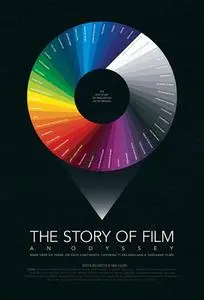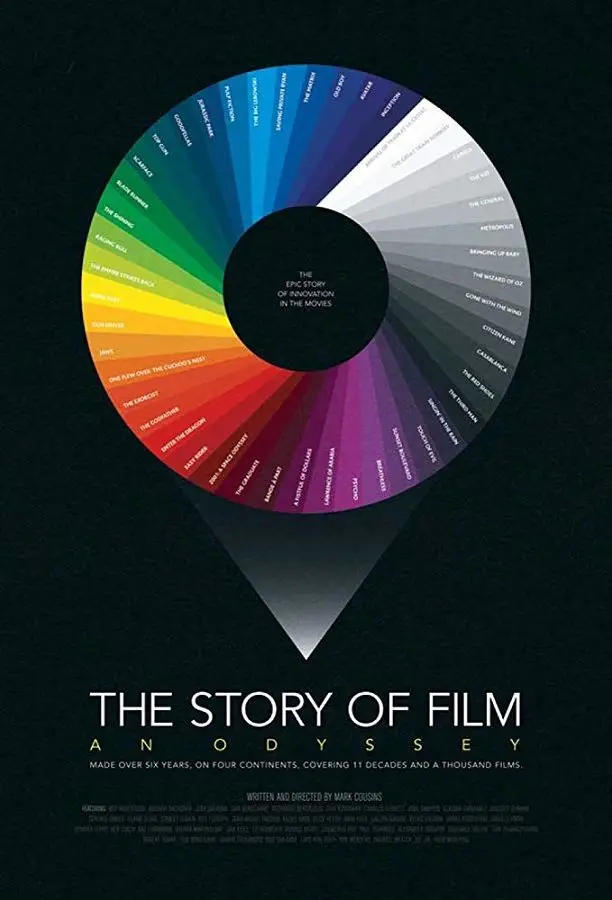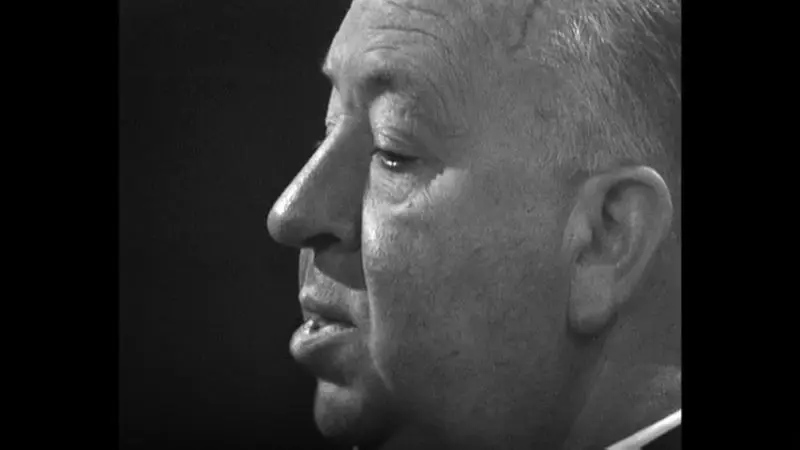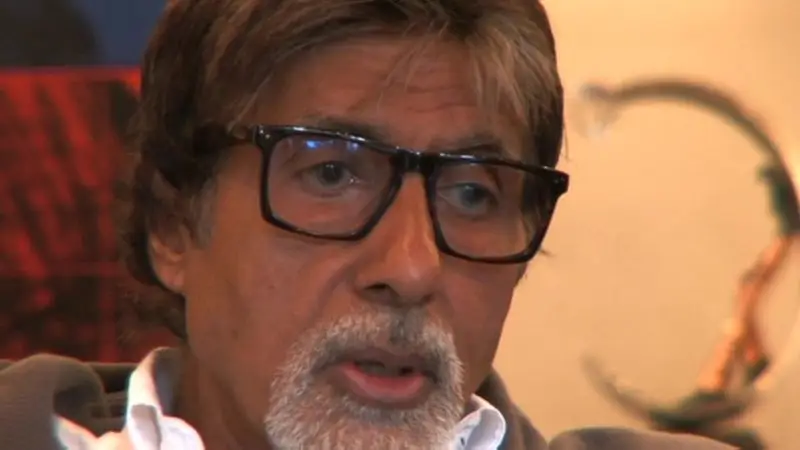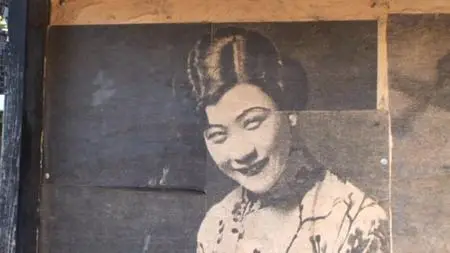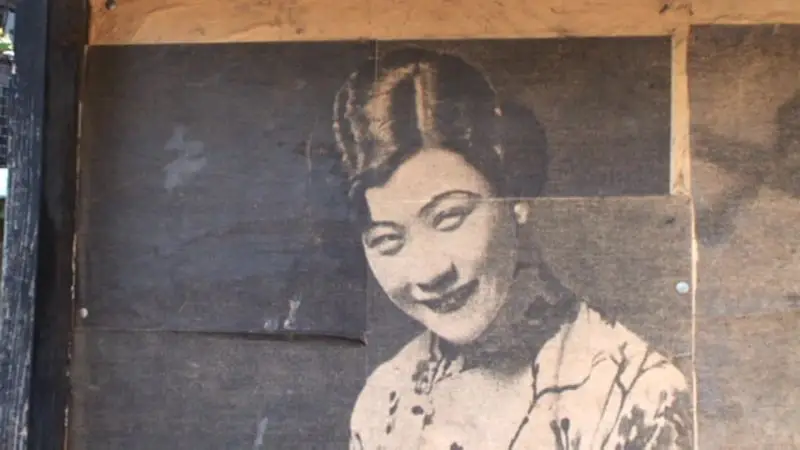Hopscotch Films - The Story of Film (2011)
DVDRip | 720 x 480 | .MKV/AVC @ 1916 Kbps | 15x~63mn | 13.6 GB
Audio: English AC-3 192 Kbps, 2 channels | Subs: None
Genre: Documentary
DVDRip | 720 x 480 | .MKV/AVC @ 1916 Kbps | 15x~63mn | 13.6 GB
Audio: English AC-3 192 Kbps, 2 channels | Subs: None
Genre: Documentary
The Story of Film: An Odyssey is an unprecedented cinematic event, an epic journey through the history of world cinema that is a treat for movie lovers around the globe. Guided by film historian Mark Cousins, this bold 15-part love letter to the movies begins with the invention of motion pictures at the end of the 19th century and concludes with the multi-billion dollar globalized digital industry of the 21st.
The Story of Film: An Odyssey heralds a unique approach to the evolution of film art by focusing on the artistic vision and innovations of filmmaking pioneers. Cousins’ distinctive approach also yields a personal and idiosyncratic rewriting of film history.
Filmed at key locations in film history on every continent, from Thomas Edison’s New Jersey laboratory, to Hitchcock’s London; from post-war Rome to the thriving industry of modern day Mumbai - this landmark documentary is filled with glorious clips from some of the greatest movies ever made and features interviews with legendary filmmakers and actors including Stanley Donen, Kyoko Kagawa, Gus van Sant, Lars Von Trier, Wim Wenders, Abbas Kiarostami, Claire Denis, Bernardo Bertolucci, Robert Towne, Jane Campion and Claudia Cardinale.
01
This opening of The Story of Film: An Odyssey shows the birth of a great new art form, the movies. Filmed in the very buildings where the first movies were made, it shows that ideas and passion have always driven film, more than money and marketing. We hear the story of the very first movie stars, close-ups and special effects and then we travel to Hollywood to see how it became a myth. The story is full of surprises, such as the fact that the greatest, and best, paid writers in these early years were women. And then there’s the glamour: the building of the great movie cathedrals.
02
This is the fascinating story of the movies in the roaring 20s. We see how Hollywood became a glittering entertainment industry and how star directors like Charlie Chaplin and Buster Keaton emerged. But the gloss and fantasy was challenged by movie makers like Robert Flaherty, Eric Von Stroheim and Carl Theodor Dreyer, who wanted films to be more serious and mature. Filmed in Hollywood, Denmark and Moscow, this part looks at the battle over the soul of cinema and some of the greatest movies ever made.
03
The 1920s were a golden age for world cinema. In this part, we visit Paris, Berlin, Moscow, Shanghai and Tokyo to discover the places where movie makers were pushing the boundaries of the medium. German Expressionism, Soviet montage, French impressionism and surrealism were passionate new film movements, but less well known are the glories of Chinese and Japanese films and the moving story of one of the great, now forgotten, movie stars: Ruan Lingyu.
04
In part 4, we see how the coming of sound in the 1930s upended everything. We watch the birth of new types of film: screwball comedies, gangster pictures,horror films, westerns and musicals, and discover a master of most of them: Howard Hawks. Far away from Hollywood, in England Alfred Hitchcock hits his stride and French directors become masters of mood. And we discover that three of the great films of 1939 - The Wizard of Oz, Gone with the Wind and Nintochka – have something in common.
05
This part of The Story of Film shows how the trauma of war made cinema more daring. The story starts in Italy, and then we go to Hollywood, discover Orson Welles and chart the darkening of American film and the drama of the McCarthy era. Screenwriters Paul Schrader and Robert Towne discuss theses years. The director of Singin’ in the Rain, Stanley Donen, talks exclusively about his career, and we discover that British films like The Third Man best sum up these extraordinary years.
06
This part explores the story of sex and melodrama in the movies of the 50s. We discover James Dean, On the Waterfront and the glossy weepies of the time, but also travel to Egypt, India, China, Mexico, Britain and Japan to find that movies there were also full of rage and passion. Features exclusive interviews with the people who worked with Satyajit Ray, with legendary actress Kyoko Kagawa–who starred in films by Akira Kurosawa and Yasujiro Ozu, and the first great African director, Youssef Chahine.
07
This is the explosive story of film in the late 50s and 60s. The great movie star Claudia Cardinale talks exclusively about Federico Fellini. In Denmark, Lars Von Trier describes his admiration for Ingmar Bergman, and Bernardo Bertolucci remembers his work with Pier Paolo Pasolini. We discover how French filmmakers planted a bomb under the movies and see how the new wave it caused swept across Europe.
08
This is the story of the dazzling 1960s in cinema around the world. In Hollywood, legendary cinematographer Haskell Wexler reveals how documentary influenced mainstream movies. Easy Rider and 2001: A Space Odyssey begin a new era in America cinema. And as the new wave in cinema sweeps around the world, we discover the films of Roman Polanski, Andrei Tarkovsky, and Nagisa Oshima. Black African cinema is born and we talk exclusively to the Indian master director Mani Kaul.
09
This is the remarkable story of the maturing of American cinema of the late 60s and 70s. Buck Henry, who wrote The Graduate, talks exclusively about movie satire of the time. Paul Schrader in New York reveals his thoughts on his existential screenplay for Taxi Driver. Writer Robert Towne explores the dark ideas in Chinatown, and director Charles Burnett talks about the birth of Black American cinema.
10
This is the story of the movies that tried to change the world in the 70s. We start in Germany with Wim Wenders, head to Britain in the 70s and talk exclusively to Ken Loach, travel to Italy, see the birth of new Australian cinema, and then arrive in Japan, which was making the most moving films in the world. Even bigger, bolder questions about film were being asked in Africa and South America, and the story ends with John Lennon’s favorite film, the extraordinary, psychedelic The Holy Mountain.
11
Star Wars, Jaws and The Exorcist created the multiplexes, but they were also innovative. The Story of Film: Part 11 explains how, and then travels to India where the world’s most famous movie star, Amitabh Bachchan, shows how Bollywood was doing new things in the 70s. And we discover that Bruce Lee movies in Hong Kong kickstarted the kinetic films of Hong Kong, where Master Yuen Wo Ping talks exclusively about his action movies and his wire fu choreography for The Matrix.
12
With Ronald Reagan in the White House and Margaret Thatcher in Downing Street, the 1980s were the years of protest in the movies. This is the story of how brave filmmakers spoke truth to power. American independent director John Sayles talks exclusively about these years. In Beijing we discover the blossoming of Chinese cinema before the Tian’anmen crackdown. In the Soviet Union, the past wells up in astonishing films, and in Poland the master director Krzysztof Kieslowski emerges.
13
Few saw it coming, but cinema around the world in the 90s entered a golden age. The story starts in Iran, where we meet Abbas Kiarostami, who rethought movie making and made it more real. Then we meet Shinya Tsukamoto, who laid the ground for the bold new Japanese horror cinema. From Tokyo, the story moves to Paris where one of the world’s greatest directors, Claire Denis, talks exclusively about her work. The story ends in Mexico with the blossoming of its new films.
14
This is the story of the brilliant, flashy, playful movies in the English-speaking world in the 90s. We look at what was new in Tarantino’s dialogue and the edge of the Coen brothers. The writer of Starship Troopers and Robocop talks exclusively about their irony. In Australia, Baz Luhrmann talks about Romeo + Juliet and Moulin Rouge and we plunge into the digital world to see how it changed the movies forever.
15
In the final part of The Story of Film: An Odyssey, movies come full circle. They get more serious after 9/11, and Romanian movies come to the fore, followed by David Lynch’s Mulholland Drive becoming one of the most complex dream films ever made and Inception turning film into a game. In Moscow, master director Alexander Sokurov talks exclusively about his innovative films and then there’s a surprise: The Story of Film goes beyond the present, to look at film in the future.
General
Unique ID : 184729862031093714876447597982853056222 (0x8AF9AD62EE64635FB6B5B00F3B9346DE)
Complete name : The.Story.of.Film.An.Odyssey.01of15.mkv
Format : Matroska
Format version : Version 4 / Version 2
File size : 964 MiB
Duration : 1 h 3 min
Overall bit rate : 2 110 kb/s
Movie name : The Story of Film: An Odyssey - E01 [2011] DVDRip - HJ
Encoded date : UTC 2016-09-12 21:56:08
Writing application : mkvmerge v9.4.2 ('So High') 64bit
Writing library : libebml v1.3.4 + libmatroska v1.4.5
Video
ID : 1
Format : AVC
Format/Info : Advanced Video Codec
Format profile : High@L3.1
Format settings, CABAC : Yes
Format settings, ReFrames : 12 frames
Codec ID : V_MPEG4/ISO/AVC
Duration : 1 h 3 min
Bit rate : 1 916 kb/s
Width : 720 pixels
Height : 480 pixels
Display aspect ratio : 16:9
Frame rate mode : Constant
Frame rate : 23.976 (24000/1001) FPS
Color space : YUV
Chroma subsampling : 4:2:0
Bit depth : 8 bits
Scan type : Progressive
Bits/(Pixel*Frame) : 0.231
Stream size : 876 MiB (91%)
Writing library : x264 core 142 r2479 dd79a61
Encoding settings : cabac=1 / ref=12 / deblock=1:-3:-3 / analyse=0x3:0x133 / me=umh / subme=10 / psy=1 / psy_rd=1.00:0.00 / mixed_ref=1 / me_range=32 / chroma_me=1 / trellis=2 / 8x8dct=1 / cqm=0 / deadzone=21,11 / fast_pskip=0 / chroma_qp_offset=-2 / threads=6 / lookahead_threads=1 / sliced_threads=0 / nr=0 / decimate=0 / interlaced=0 / bluray_compat=0 / constrained_intra=0 / bframes=14 / b_pyramid=2 / b_adapt=2 / b_bias=0 / direct=3 / weightb=1 / open_gop=0 / weightp=2 / keyint=240 / keyint_min=24 / scenecut=40 / intra_refresh=0 / rc_lookahead=100 / rc=crf / mbtree=1 / crf=18.5 / qcomp=0.60 / qpmin=0 / qpmax=69 / qpstep=4 / ip_ratio=1.40 / aq=1:1.00
Language : English
Default : Yes
Forced : No
Color range : Limited
Color primaries : BT.601 NTSC
Transfer characteristics : BT.709
Matrix coefficients : BT.601
Audio
ID : 2
Format : AC-3
Format/Info : Audio Coding 3
Format settings, Endianness : Big
Codec ID : A_AC3
Duration : 1 h 3 min
Bit rate mode : Constant
Bit rate : 192 kb/s
Channel(s) : 2 channels
Channel positions : Front: L R
Sampling rate : 48.0 kHz
Frame rate : 31.250 FPS (1536 spf)
Bit depth : 16 bits
Compression mode : Lossy
Stream size : 87.7 MiB (9%)
Title : English
Language : English
Service kind : Complete Main
Default : Yes
Forced : No
Menu
00:00:00.000 : en:1. Images and Ideas
00:08:29.000 : en:2. The Souce of the Nile
00:24:09.000 : en:3. Thrill Becomes Story: Early Innovation in Editing
00:31:49.735 : en:4. The Star System
00:35:17.902 : en:5. Scandinavian Cinema
00:39:49.302 : en:6. The Bauble: Artifice Takes Root in Hollywood
00:48:10.069 : en:7. Women Built Hollywood
00:54:01.002 : en:8. The Wind in the Trees
Unique ID : 184729862031093714876447597982853056222 (0x8AF9AD62EE64635FB6B5B00F3B9346DE)
Complete name : The.Story.of.Film.An.Odyssey.01of15.mkv
Format : Matroska
Format version : Version 4 / Version 2
File size : 964 MiB
Duration : 1 h 3 min
Overall bit rate : 2 110 kb/s
Movie name : The Story of Film: An Odyssey - E01 [2011] DVDRip - HJ
Encoded date : UTC 2016-09-12 21:56:08
Writing application : mkvmerge v9.4.2 ('So High') 64bit
Writing library : libebml v1.3.4 + libmatroska v1.4.5
Video
ID : 1
Format : AVC
Format/Info : Advanced Video Codec
Format profile : High@L3.1
Format settings, CABAC : Yes
Format settings, ReFrames : 12 frames
Codec ID : V_MPEG4/ISO/AVC
Duration : 1 h 3 min
Bit rate : 1 916 kb/s
Width : 720 pixels
Height : 480 pixels
Display aspect ratio : 16:9
Frame rate mode : Constant
Frame rate : 23.976 (24000/1001) FPS
Color space : YUV
Chroma subsampling : 4:2:0
Bit depth : 8 bits
Scan type : Progressive
Bits/(Pixel*Frame) : 0.231
Stream size : 876 MiB (91%)
Writing library : x264 core 142 r2479 dd79a61
Encoding settings : cabac=1 / ref=12 / deblock=1:-3:-3 / analyse=0x3:0x133 / me=umh / subme=10 / psy=1 / psy_rd=1.00:0.00 / mixed_ref=1 / me_range=32 / chroma_me=1 / trellis=2 / 8x8dct=1 / cqm=0 / deadzone=21,11 / fast_pskip=0 / chroma_qp_offset=-2 / threads=6 / lookahead_threads=1 / sliced_threads=0 / nr=0 / decimate=0 / interlaced=0 / bluray_compat=0 / constrained_intra=0 / bframes=14 / b_pyramid=2 / b_adapt=2 / b_bias=0 / direct=3 / weightb=1 / open_gop=0 / weightp=2 / keyint=240 / keyint_min=24 / scenecut=40 / intra_refresh=0 / rc_lookahead=100 / rc=crf / mbtree=1 / crf=18.5 / qcomp=0.60 / qpmin=0 / qpmax=69 / qpstep=4 / ip_ratio=1.40 / aq=1:1.00
Language : English
Default : Yes
Forced : No
Color range : Limited
Color primaries : BT.601 NTSC
Transfer characteristics : BT.709
Matrix coefficients : BT.601
Audio
ID : 2
Format : AC-3
Format/Info : Audio Coding 3
Format settings, Endianness : Big
Codec ID : A_AC3
Duration : 1 h 3 min
Bit rate mode : Constant
Bit rate : 192 kb/s
Channel(s) : 2 channels
Channel positions : Front: L R
Sampling rate : 48.0 kHz
Frame rate : 31.250 FPS (1536 spf)
Bit depth : 16 bits
Compression mode : Lossy
Stream size : 87.7 MiB (9%)
Title : English
Language : English
Service kind : Complete Main
Default : Yes
Forced : No
Menu
00:00:00.000 : en:1. Images and Ideas
00:08:29.000 : en:2. The Souce of the Nile
00:24:09.000 : en:3. Thrill Becomes Story: Early Innovation in Editing
00:31:49.735 : en:4. The Star System
00:35:17.902 : en:5. Scandinavian Cinema
00:39:49.302 : en:6. The Bauble: Artifice Takes Root in Hollywood
00:48:10.069 : en:7. Women Built Hollywood
00:54:01.002 : en:8. The Wind in the Trees
Screenshots
Welcome to my blog - daily update!


